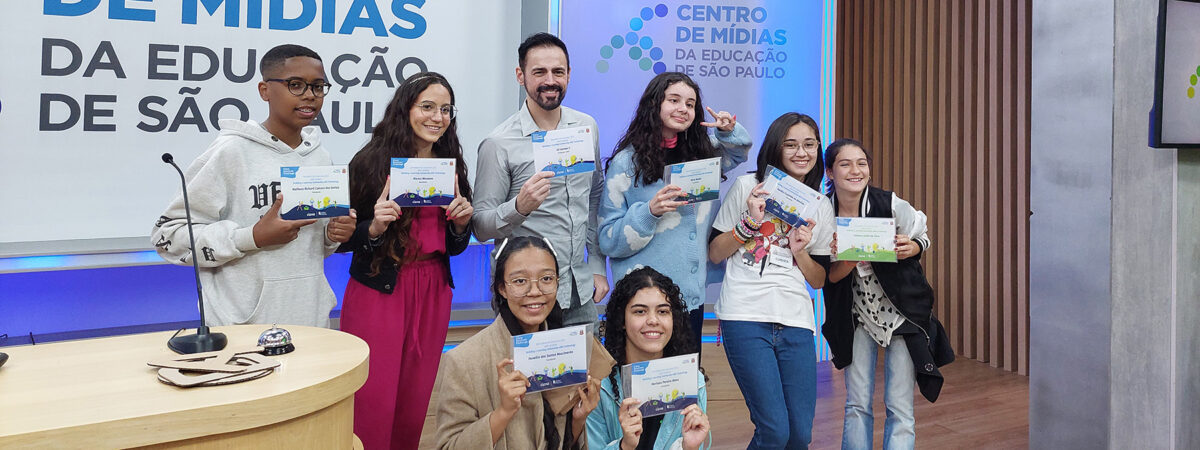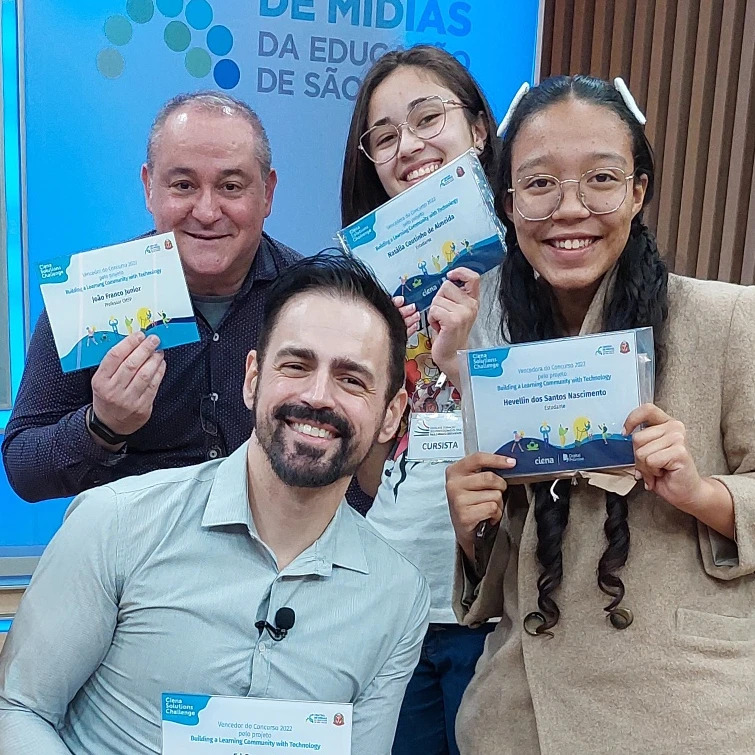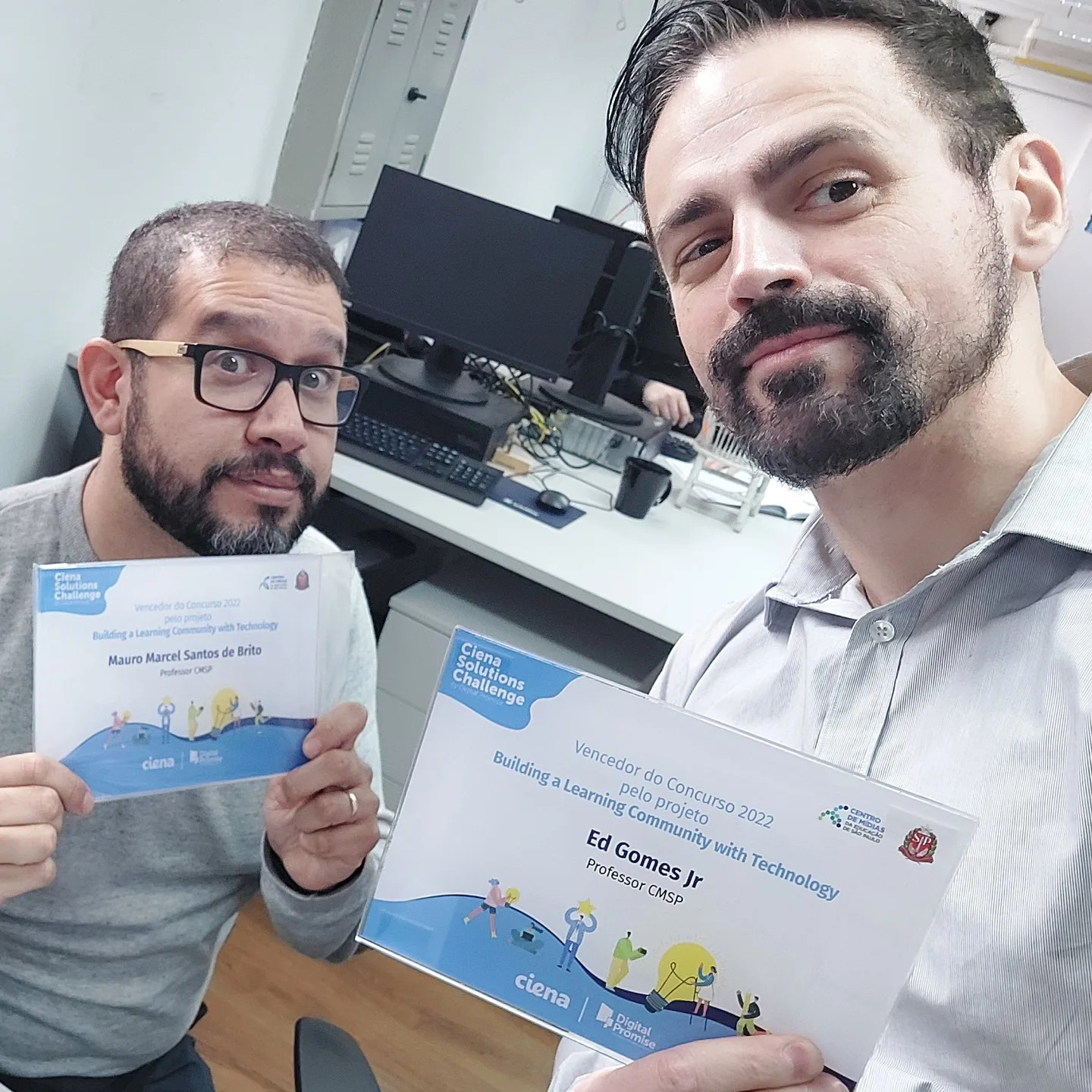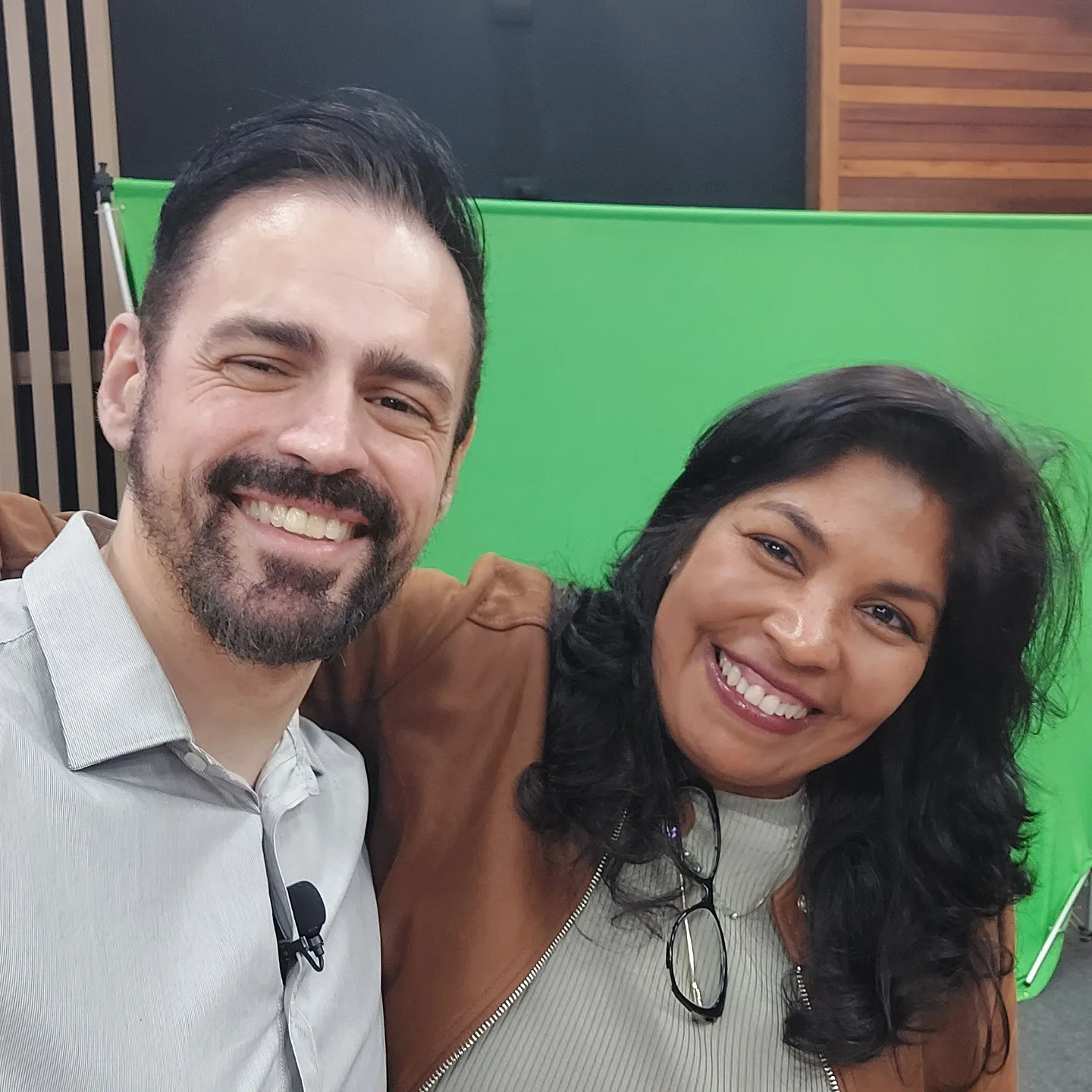
The Ciena Solutions Challenge is a global design challenge by Digital Promise and Ciena that invites middle and high school students to design solutions that address Sustainable Development Goals within their communities. This blog post is part of a series featuring educators whose students’ projects exemplify core elements of the Challenge: creative use of technology, social purpose, student agency and leadership, and sustainability and scaling. Below are lessons on sustainability and scaling from educator Ed Gomes Jr. who manages programming at Centro de Mídias da Educação for schools across the state of São Paulo, Brazil, and facilitated the Building a Learning Community Through Technology and Engaging Youth Protagonism Through Safe Zones student project teams.
I teach English as a second language, literature, and linguistics in São Paulo, Brazil, to middle school through college students. It is common for students in these communities to start working when they are in the first grade. There are also many college students who work during mornings and afternoons before going to classes.
Learning a second language will play an important role for many of these students, whether in a job interview, learning certain technologies, or other aspects of daily life. Since English is not my students’ mother tongue, we are always trying to involve them in activities in which they can use English in a more practical way than just reading and translating texts.
We have also seen that the concept of local community change during and after the pandemic—something I’ve witnessed first hand since moving from teaching in a neighborhood community to teaching through an app that is used by public school students across the state of São Paulo. During this time, it has become increasingly common to see students in different cities interacting with each other through virtual classes.
In this context, we developed a number of student projects, including “Games for Change,” a project in which students play and then create their own games, “Building a Learning Community Through Technology,” that provides opportunities for students and families to practice English by producing videos, and “Engaging Youth Protagonism Through Safe Zones,” in which students have built school spaces where they and their peers can build social skills.

Students Aline M. and Havelline D.
In both “Games for Change” and “Building a Learning Community Through Technology,” the first step was to create opportunities for students to engage with games and videos using English in daily situations, respectively.
With “Games for Change,” students defined themes for their own games, and after developing them, they hosted a board game day in their school where students exchanged and played their games together. In “Building a Learning Community through Technology,” students and families produced videos based on various scenarios presented by English language teachers and then sent them to their teachers at local schools. Teachers at local schools curated the videos and we exhibited them in classes on the app and on our education TV channel.
Although students are back to in-person classes, we continue to develop materials for online classes, and students are continuing to develop videos with their local teachers. We also see families practicing English, which is gratifying given the impact a second language can make on their lives. By taking action in learning, families proved that there are no restrictions for learning—it can be done in almost any environment beyond schools.
“Hearing that my project with the families showed that ‘everyone can learn’ made me sure we were on the right path.”

Students Aline M. and Natália C. with teacher Ed Gomes Jr.
Engaging Youth Protagonism Through Safe Zones developed after I asked students what the most challenging issue for them is now that they are back to in-person classes. Most of them shared that two years at home due to the pandemic had negatively impacted their social skills and led to an increase of bullying at schools. Bullying has been increasing and becoming a more and more important subject in the last few years, so it matters that everyone take actions to prevent it.
As students investigated the challenge that they identified, they decided to take action by building areas where students could get together, following the example of student activity centers at universities in the United States. Students found areas which were not being used on a regular basis at their schools, investigated what resources could be provided in those places, built a budget, and sought partnerships inside their schools communities that could also provide resources so that they did not have to depend only on the possibility of receiving a Ciena Solutions Challenge Sustainability Award.
The idea of the Safe Zones starts with a room, but it becomes a safe school and ultimately, a safe community. In recent months, students have continued to iterate and make adjustments to the Safe Zones, and, together, we are working to get support from the Secretary of Education and media coverage that will help us to spread the initiative to other areas and schools in the state of São Paulo. In addition, as we all are readapting to in-person routines, the idea of a Safe Zone has even been replicated for teachers, such as in the headquarters of the secretary of education and at EFAPE (School of Teacher Development).
Throughout our project activities, we had great support from many people in the community, including other teachers. For example, Ana Lucia Trinquinato Toriani contacted families from her region to participate and acted as a curator for the videos that students and families submitted to the project. Janaína Jardim developed a project about anti-racist communication. And Antonio José coordinated live broadcasts about the Safe Zone project to student associations and key people around the state of São Paulo. Teacher and vice-principal Jonas Almeida engaged students at his school and facilitated the various bureaucratic steps to make it happen. Patricia Borges, director of the secretary of education, provided support for the project to be finished and gave our team autonomy in the decision-making process.

Teachers João Franco Jr. and Ed Gomes Jr. with students Hevellin and Natália Coutinho receiving the award.
We also used the resources of the Centro de Mídias da Educação app to connect students from rural and urban areas across the state of São Paulo. As part of this, in “Building a Learning Community through Technology,” teachers João Franco Jr., Fabiana Wharton, and Mauro Marcel teamed up to produce a series of videos that students used as examples when producing their own videos. And, the Carlos Vanzolini Foundation recorded and edited the first videos for the classes.

Teachers Mauro Marcel and Ed Gomes Jr.
As students participated in these projects and presented at the YouthMADE Festival, it was clear that they developed skills that they will use in the future, such as preparing effective presentations, communicating with different audiences in a second language, and considering sustainability when developing projects or even on a daily basis.
“It was impressive that some students who were really shy became team leaders and were able to talk in public in a foreign language.”
The advice I would give to others doing a project like this is to build a strong team, not only with students, but also with other teachers and administrators. Students are the main protagonists and without them the projects make no sense, but involving other teachers and administrators make the projects feasible when it comes to implementation

Teachers Ed Gomes Jr. and Ivanete Landin (also winner of Ciena’s Solutions Challenge for the Seeds of the Future project)
“After receiving the Ciena Solutions Challenge Sustainability Award, we hosted an event with students, teachers and families from all over the state for a special class (together with the “Seeds of the Future” Sustainability Award recipients) that was broadcast on Education TV and we could see that we can apply projects locally but we can also think globally.”